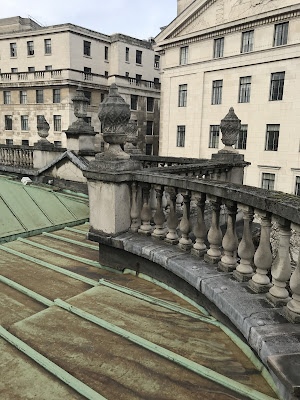I was fortunate enough to visit the above building for work. It is a gorgeous ecclesiastical building located in the middle of a traffic island in central London. The building in its current form has a history dating back to 1714, however the church existed prior to this in a different form and situated close by. It’s namesake dates back to at least 1222 when it was referred to as the ‘Church of the innocents’. The current church was built in conjunction with 11 others across London as part of the ‘Commission for Building Fifty New Churches’.
The architect responsible for the design was James Gibbs, an influential Scotsman. Much like his contemporaries, Gibbs embarked on a Grand Tour to observe and learn the classical style. At this point in time, we were at the very beginning of what would be a politically charged overhaul in the language employed to adorn our civic and ecclesiastical architecture: where the Palladian style, and clean, functional classicism, would reign supreme. Gibbs’ style, whilst not reflective of what would have been considered tasteful in the 1760’s, was influenced by the works of Palladio and the likes of the Villa Capra in Vicenza. Other sources of influence however could be Baroque architecture in Italy, particularly Rome. Whilst this view is well represented, the building appears to me to be very Michelangeloesque and particularly where the footprint is relatively condensed, the oversized pediments make it look like a ginormous sculptural tomb. Much like some of the mannerist work in the mid 16th-17th century in Italy. One of his major sources of influence is also stated to be Christopher Wren and whilst visually speaking you can draw comparisons with his work I like to think this is quirky and original for its location and time. However, it is worth noting that apparently the vertical massing of the building was an unintended consequence of commissioners’ interference in the design.
The building currently requires substantial work as the condition worsens. It is open on a daily basis and any donations would go a long way to securing the future of the building. Pictures below.












No comments:
Post a Comment